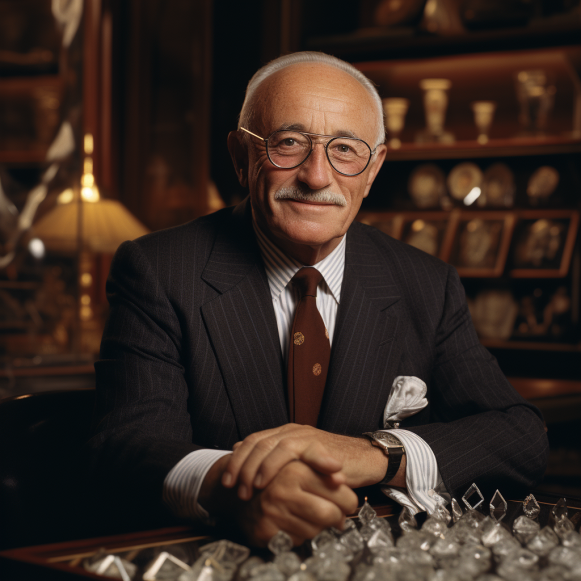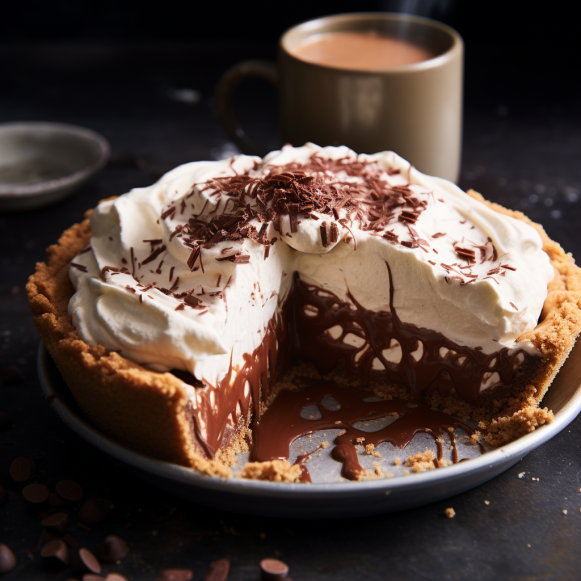‘King of Diamonds’ explores the dramatic life of jeweler Harry Winston

The name Harry Winston is synonymous with glamour and jewels; it is associated with Hollywood stars, royal families, and business titans. In 1953’s classic film “Gentlemen Prefer Blondes,” Marilyn Monroe breathlessly sang, “Talk to me, Harry Winston; tell me all about it!” and cemented the name in legend.
But, according to his eldest and only living son, Ronald Winston, the man behind the brand was a complicated person as well as a difficult-to-live-up-to icon.
The first few pages of Ronald Winston and William Stadiem’s book, “King of Diamonds: Harry Winston, The Definitive Biography of An American Icon,” contain a telling episode from the author’s childhood: His well-known jeweler father was “bouncing me around, having a wonderful time” in the family’s opulent New York apartment.
Winston then threw his son “hard and fast” onto the rug, shocking the child.
As Ronald begins to cry, the renowned jeweler advises him, “Never trust anyone in life.” Nobody, not even your own father.”
“His intention was very pure and good, but it was not an exceptionally fine way to educate a child,” Ronald Winston said earlier this month in an email interview. “It was kind of a brutal way to impress upon a baby the uncaring nature of the world outside.”
“King of Diamonds” was published on September 19 by Skyhorse Press and is as much a memoir of Winston’s own life navigating a world of wealth and intrigue as it is a biography of his famous father. The book tells the incredible rags-to-riches story of Harry Winston’s life: He was born in 1896 to a poor Jewish family who fled Ukraine for New York, where they started a small jewelry business.
The first Harry Winston store opened in 1932, kicking off a journey that has intersected with historical events such as the Great Depression and World War II, as well as some of the most famous people in modern history, from Elizabeth Taylor to the Duke and Duchess of Windsor and many more. Former President Donald Trump appears in these pages as well.
“My father never got much further than the ninth grade, and he was very small to the point of being tiny,” Roland Winston explained. “This did not detract from his confidence in the presence of people of fame and fortune.” In fact, his clients and the general public adored him and admired his candor and charm.”
Harry Winston seemed to be obsessed with gems, and the first indication that they would lead to his fortune occurred when he was 12 years old. He paid 25 cents for a two-carat emerald he spotted in a pawn shop. He sold the same stone for $800 two days later.
Ronald Winston writes in “King of Diamonds” that his father embarked on a “Grail”-like quest to acquire all of the world’s most famous diamonds – he famously owned the Hope Diamond before donating it to the Smithsonian Institution in 1958 – and was once said to have a collection rivaled only by the Queen of England.
“He realized they were the key to his individuality.” Nobody had ever collected and cut such massive stones before. “He wasn’t just amassing a large diamond collection; he was also breaking new ground,” Ronald Winston explained.
His father “treated the diamonds as his babies, and he would frequently play with them at his desk and even have one in his suit pocket,” Ronald explained. “Sometimes he’d bring one of his great treasures home and pull it from his pocket like a candy bar, ‘Look darling, that’s a Tavernier diamond, isn’t it beautiful?'” And, despite the fact that I am only five years old, I have very clear memories of these events as a child and as I grew up.”
Ronald writes that he loved chemistry and aspired to be a scientist after graduating from Harvard University, where he met Timothy Leary (just one of the many famous names in this book). He even attended the Massachusetts Institute of Technology and New York University before joining the family business at the insistence of his father.
Harry Winston died in 1978, and this is where the “King of Diamonds” devolves into Shakespearean tragedy: Ronald and his brother Bruce fight for control, which results in the company being sold to another corporation, which still stings.
But for Ronald, being able to tell the entire story of his father’s meteoric rise and lasting cultural influence, a story he began more than 20 years ago, has provided a sense of completion in and of itself.
“It’s a great feeling of accomplishment to physically hold the tome in my hands and know that the stories are now down on paper,” the author, who is now in his 80s and lives in Santa Barbara, said. “I am certain that his life as a storyteller will live on forever, and I am incredibly proud and happy to be a part of it, as well as to have written his biography.”






